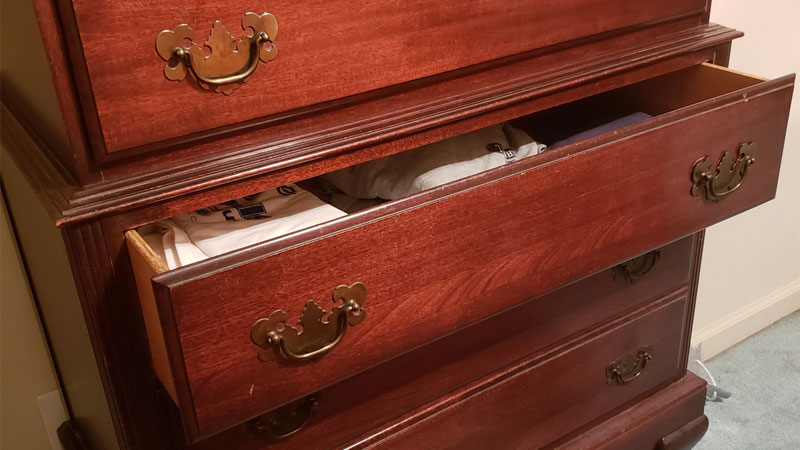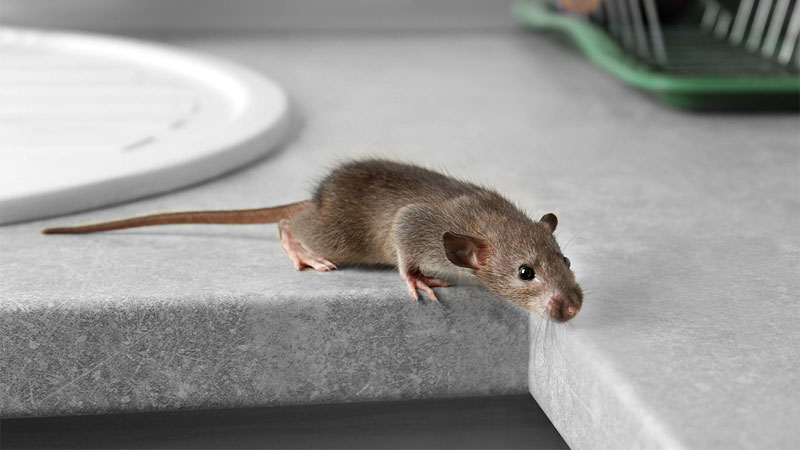Musophobia can leave even the bravest person on chairs, but what happens when you encounter mice in drawers while you’re grabbing clothes?
But how do mice get in drawers in the first place?
Here’s how to keep mice out of drawers in the bedroom or kitchen, as well as how they got there to begin with.
How to Keep Mice out of Drawers or Cabinets
While most of the methods we’ll cover can work for all sorts of storage containers, there are as few things that work better in the kitchen or bedroom.
Here are some easy and safe tricks for both areas.
Later, we’ll discuss a few home remedies that have gotten a lot of recent internet support – and whether they live up to the hype.
How to Keep Mice Out of Dresser Drawers
There’s no such thing as a mouse proof dresser, as wonderful as that would be.
Instead, you should be ready for this pest to go after closets and dressers if you have an infestation.
The good news is that you can take steps to chase them out of your clothing and keep them out.
Here are a few natural ways to keep mice out of drawers:
#1 – Close Up Any Gaps in Your Dresser
Mice are always on the lookout for warm and dark places to hide.
If they come across any potential crevice or hole in your dresser, they will take it in a heartbeat!
To prevent this from happening, examine all portions of the dresser and drawers for potential access points.
Seal off any openings or gaps that may allow these rodents might try to enter.
You can do this by using steel wool or copper mesh to fill and block the space.
Don’t forget that mice can climb, so don’t just focus on low spaces.
#2 – Keep Your Drawers Clean
It should go without saying that dresser drawers are meant for clothes.
However, we all have a habit if hiding snacks or other food in them from time to time.
It’s important to remove these goodies when you notice signs of mice in the house.
Even if you don’t keep food in there, be sure to regularly empty and vacuum the drawers to get rid of dirt and dust.
#3 – Use Natural Remedies Like Peppermint Oil
Peppermint oil (and its relatives, such as eucalyptus and spearmint) contain menthol.
This is what gives mint its wonderful nose-clearing qualities and also drives most pets away.
If you don’t wish to invest in essential oils, you can also crush fresh leaves and put them in a small potpourri sachet.
The pleasant, yet strong smell of peppermint will last a surprisingly long time.
#4 – Use Bleach
Bleach is a powerful deterrent for mice, as they simply cannot bear its strong, pungent odor.
The fumes are highly toxic and direct contact will eat away at their skin.
Of course, you need to be careful using this to keep mice out of drawers, as bleach can damage wood finishes or clothing.
#5 – Get a Cat
While this won’t necessarily stop the critters already in your drawers, cats are a natural predator of mice and rats.
If you leave your drawers open, the cats may be able to catch the little pests hiding in your dresser.
Remember to remove your clothes first and give them a good washing before putting them in the now mouse-free drawers.
Cats can reduce the number of mice running loose, but be warned – not all cats are active hunters.
They also won’t be able to handle a full-scale infestation, which will require an exterminator.
Still, your feline friend can help prevent a major mouse infestation if you don’t mind them presenting dead mice as an occasional gift.
Just be aware that field mice and other species can potentially carry diseases or parasites that could harm your cat.
How to Keep Mice Out of Kitchen Drawers
So now that you know how to keep mice out of clothes drawers, what about the kitchen?
This is a little trickier because you don’t want to contaminate your own food sources or utensils with harsh chemicals.
Thankfully, your kitchen is also home to many natural mouse repellents – mainly kitchen herbs.
Mint, sage, thyme, basil, and other strong-smelling herbs can all be used to keep a number of pests away from your drawers and cabinets.
It’s also a good idea to vacuum and wash out your drawers once per month.
Use some diluted white vinegar, which is generally safe for wood (a little lemon juice will help preserve the wood).
Cleaning wipes such as Clorox will also work, and removable plastic utensil trays can be washed in bleach if you rinse them really well after.
Why Do Mice Go Inside Drawers?
Mice will find a way into your drawers in search of three things: a hiding place, food sources, and nesting material.
Even if you seal any entry points, they’ll chew through the wood if they smell food inside.
They’ll then use your clothing to nest, leaving mouse poop all over the clean fabrics.
Does Charcoal Keep Mice Away?
An old home remedy against mice is to use charcoal, but it’s not as effective as the stories claim.
Mice don’t associate charcoal with a viable food source.
Additionally, activated charcoal can pull odors out of the air, which may help mask some mild food-related smells.
However, these animals will actually eat activated charcoal to neutralize poison.
There’s nothing wrong with placing a few briquettes in a small bag and using it to keep nasty odors at bay.
Just don’t expect it to be an effective rodent repellent, especially if you have poison bait out.
Do Dryer Sheets Keep Mice Away?
In a serious pinch, dryer sheets do have a minor repellent effect on mice.
This is due to the strong perfumes present in a fresh sheet.
However, this scent will fade after only a few days, and mice can get used to the smell if you keep using them.
Still, placing a sheet or two among your freshly washed clothing can keep them smelling fresh, so there’s no harm in trying this trick out.
Just make sure it’s not the only method you’re trying.
- How to Identify Skunk Poop (With Pictures) - April 1, 2024
- You Really Don’t Need That Opossum Trap - January 4, 2024
- How to Set a Mouse Trap Without Getting Hurt - December 28, 2023



